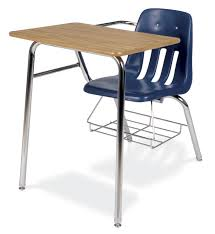“For the first time in the history of education, the teacher, the student, and the content do not need to be in the same place at the same time.” Ian Jukes, Windows on the Future

How we handle the details of designing our “learning spaces” ultimately determines what happens in our classrooms. As Jukes points out, for the first time in history students and teachers do not even have to be in the same place when learning. Also, the content is no longer confined to textbooks. Still, our schools’ classrooms are designed for “imparting knowledge” not engaging in authentic learning. I would bet if you look at any recent plan drawn up for a new school, the spaces are still designed for traditional factory model learning. The classrooms are arranged like so many pods with desks sitting in rows with a teacher desk placed at the front of the room with a whiteboard located behind. What many still do not quite understand is a simple principle of classroom design: How you plan the learning space ultimately determines the kinds of learning that happens in that space. Even the furniture selections can impact the learning that happens.
Take the student desk as an example (like the illustration above). These desks are still everywhere in our schools. When new schools are built, hundreds of these are ordered and then placed in neat rows in classrooms. But this particular desk is problematic if we are looking to create learning spaces where students collaborate and engage in active learning. These desks are designed to be placed in rows and to actually restrict the movement of the student sitting in it. Have you ever complained about how hard it is to move and get out of these things? But in a factory era school, student movement is discouraged and what better way to do it than by designing a desk that minimizes the movement of students? These desks are perhaps a symbol of what’s amiss about so-called 21st century education today. We still think of learning spaces as ways to control students rather than ways to engage them in real learning.
I have no way of knowing whether those who designed the first student desks in this manner really had the goal of making a desk that restricted movement, but the fact that so many of these still exist in our classrooms is symptomatic of a greater problem: We just can’t let go of the idea that schools are factories whose job is to churn out students who have been declared educated through testing and credentialing. “Get’em through the system like widgets and declare them graduated and educated if they make through the hurdles and tests.” In our classroom learning spaces we still buy furniture whose purposes is to control and attempt to make learning fit into neat orderly boxes, when those of us who’ve been teachers for some time know real learning is messy and not always subject to the controls we place on it. We keep arranging our schools’ classrooms for teacher-directed instruction instead of designing them for student-directed and inquiry learning which we know is how most of our students want to learn. In a word, for all our talk, we are trying to fit 21st century learning into classrooms designed for factory-model education systems.
Obviously, my point is obviously not to get you to throw out all the student desks in your buildings. But, the question is, how can we re-envision our learning spaces to make authentic, engaging learning happen for our students? We can begin by looking at our current classrooms and see how we can transform them from places to control to places to explore and engage learning. This doesn’t really cost us very much either.
You need to be a member of School Leadership 2.0 to add comments!
Join School Leadership 2.0